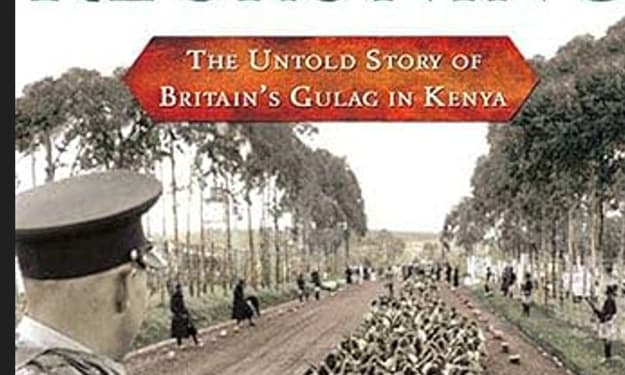Operation Jawbreaker: America's First Response to 9/11
America was quick to respond to the tragic events of September 11, 2001.

The tragic events of September 11, 2001 are forever etched in the minds of Americans. The immediate aftermath saw a U.S. focus on bringing justice to those responsible, focusing on Osama bin Laden and the Al Qaeda network. One major chapter in this hunt was Operation Jawbreaker. We're going to break down key events, objectives and outcomes of this covert operation.
Setting the Stage
The events of September 11, 2001 in New York and Virginia, led to the immediate questioning of who had the audacity, motive and resources to execute such a large-scale attack on American soil. In a matter of days, the trail led to pointing fingers at Al Qaeda, a global terror organization that was established in the '80s.
Al Qaeda, under the leadership of Osama bin Laden, was implicated in multiple terror plots against Americans, domestically and abroad. The 1998 U.S. embassy attacks in Kenya and Tanzania and the 2000 USS Cole attack showed the group's capabilities. However, 9/11 was larger in terms of scale and audacity. The American reaction was an urge for justice.
In 2001, Afghanistan was under the control of the Taliban. The Taliban emerged in the '90s in northern Pakistan and managed to seize control of most of Afghanistan. They ruled by strict interpretations of Islamic law. The Taliban provided Al Qaeda with safe haven, training camps and other support. Osama bin Laden was expelled from his home country Saudi Arabia and eventually ended up in Afghanistan.
When the U.S. government found evidence of Al Qaeda's hand in the 9/11 attacks became undeniable, the U.S. issued an ultimatum to the Taliban, hand over bin Laden and dismantle his terror group within the country or face consequences. The Taliban refused.
The CIA's Lead: Treading Where the Military Could Not
Following the 9/11 attacks, the Bush Administration saw the need for swift and decisive action against Al Qaeda and its enablers in Afghanistan. However, a conventional military approach would come with challenges when dealing with an enemy embedded within a complex terrain. This is where the CIA took the lead and spearheaded the initial phase of America's response.
The Central Intelligence Agency had a focus on non-military, covert operations, having an advantage over traditional military forces in certain aspects:
Agility and Stealth: CIA operatives were trained for covert missions. Their operations "deniable" provided a layer of political and tactical flexibility.
Deep Networks: Through the decades, the CIA established a deep network of informants, spies and collaborators within different countries, including Afghanistan. This network could be mobilized quickly for intel gathering and logistical support.
Experience with Non-State Actors: The CIA has collaborated with or countered non-state actors, including rebel groups, militias, and insurgents. This gave them experience needed to adept at navigating the intricate tribal and militia alliances of Afghanistan.
Boots on the Ground
In just a few weeks after the 9/11 attacks, a team from the CIA's Special Activities Division arrived on the grounds of Afghanistan. The team was tasked with gathering actionable intelligence on the Taliban and Al Qaeda and establish contacts with potential allies, including the Northern Alliance.
Advanced Technology
Despite being a small team, they were fairly geared up giving them real-time data linking them to the CIA headquarters in Langley. They also brought with them millions of dollars in cash, to be used to buy information, loyalty or anything else that is needed.
One of the key technological assets was satellite phones and laser designators. These allowed teams to designate targets for airstrikes with pinpoint accuracy, turning this team from just intelligence gatherers into forward air controllers.
Challenges
Running operations in a hostile environment like Afghanistan presented plenty of challenges. The team was constantly ensuring they didn't offend local customs or spark conflicts. They also had to deal with allegiances that could change, meaning trust was a rare commodity.
The Team and Its Tools
The initial push into Afghanistan under Operation Jawbreaker, called for an elite, focused team from the CIA's Special Activities Division, who brought with them a selection of tools and equipment designed to give them the edge in this mission. The operatives had a variety of backgrounds including some being ex-Special Forces, SEALs, or other elite military units. Their training them suited for Afghanistan.
Sophisticated Tech at Their Disposal
Satellite Communications: These tools allowed the team to send and receive critical real-time intelligence, and coordinate with assets in the air and ensure they remained in contact with their higher command structure.
Advanced Weaponry: While the main objective was intelligence and establishing alliances, the team planned to face combat. They were equipped with advanced weaponry.
Laser Designators: These tools allowed the team to guide precision airstrikes. They would "paint" a target with the laser, which the team could guide munitions from aircraft, ensuring pinpoint accuracy.
Predator Drone: The predator drone was still a new tool in the early 200s. It offered the team aerial reconnaissance capabilities, allowing them to scout large areas, track enemies.
Cash: This specialized team brought with them plenty of cash, with the intent of buying loyalty, information and resources on the spot.
Transportation and Mobility
With Afghanistan covered in rugged terrain, mobility was key. The team was dropped into the area by helicopter, a method that was both fast and provide an element of surprise. They also used horses, to travel the mountainous regions, specifically when working with the Northern Alliance.
Survival Gear
Before leaving for Afghanistan, the team packed up specialized winter gear, survival kits and ration packs to sustain them during operations without regular resupply.
Working with the Northern Alliance
Afghanistan has often held long-standing resistance against oppressors and internal dictators, and the Northern Alliance is a rather prominent force against those. As the U.S. was working to dismantle the Taliban's stronghold, and aligning itself with the Northern Alliance was a strategic move.
The Symbiotic Relationship
The relationship was mutually beneficial:
Local Intelligence: The Northern Alliance had been fighting the Taliban and had deep knowledge in Taliban operations and logistical routes.
Manpower: The Jawbreaker was small, but the Northern Alliance brought thousands of fighters, familiar with the landscape and guerrilla warfare, making them invaluable in skirmishes and larger operations.
Access and Logistics: The Northern Alliance handled the movement and logistical operations for American forces, providing safe passage, supplies and strategic positioning.
Challenges in Collaboration
While this alliance was strategic, it did provide many challenges. The Northern Alliance had its own tribal objectives, which occasionally diverged from American interests. The proper alignment would require constant dialogue and negotiation. There were also strong differences in language, custom, and military tactics, requiring intermediaries on the ground.
Shared Victories
The unique collaboration bore fruit rather quickly. Thanks to the intelligence from Jawbreaker operatives and the forces of the Northern Alliance, the U.S. managed to launch airstrikes against Taliban and Al Qaeda targets. This effort led to the fall of Kabul in November 2001.
Impact and Outcomes
Operation Jawbreaker set the stage for the War on Terror in Afghanistan. It showcased the integration of operations with the Northern Alliance, leading to successes against the Taliban and Al Qaeda. However there were some long-term consequences.
Immediate Military Success
Rapid Displacement of Taliban: Thanks to Operation Jawbreaker's team, military airstrikes and the Northern Alliance's ground troops, the Taliban faced massive setbacks. By the end of 2001, they lost control of Kabul and most of the country's major cities.
Al Qaeda Losses: The constant bombing of Al Qaeda bases and targets based on key intelligence, crippled their Afghanistan operations. Key leaders were either killed or forced into hiding, and training camps were decimated.
Strategic Implications
Gateway for Larger Military Presence: The initial successes of Operation Jawbreaker led the way for greater U.S. military intervention. Operation Enduring Freedom in October 2001, saw the U.S. deploy countless troops, ensuring that Afghanistan did not return to being a safe haven for terrorists.
Shift in Global Counterterrorism: This operation showed America's new approach to counterterrorism - global outreach and the willingness to engage in prolonged conflict if necessary.
Political Repercussions
New Afghan Government: With the Taliban gone, the Bonn Agreement in December 2001 led to an interim Afghan government, laying the groundwork for a democratic Afghanistan. This transition was not without challenges.
U.S.'s Enhanced Role in South Asia: The operation strengthen America's position in the region, making it a stakeholder in South Asian politics. This effect U.S. relations with neighboring countries including Pakistan and Iran.
Long-term Outcomes and Critiques
Resurgence of the Taliban: While the original operation dealt a serious blow to the Taliban, it didn't eliminate them. As the U.S. pulled out of Afghanistan through the years, the Taliban managed to return and gain support from local tribes and external backers.
Civilian Casualties: The heavy reliance on airstrikes and ground offensives, often led to civilian casualties. This led to segments of the population against the U.S. and its allies.
Question on Exit Strategy: The rapid successes at the beginning did not offer a sound long-term strategy for Afghanistan. The U.S. found itself in a conflict, now likened to Vietnam, with many pointing out the lack of a clear exit strategy.
Global Perception of the U.S.: Many nations supported the U.S.'s right to self-defense following 9/11. However, as the War on Terror progressed, issues arose, like detainee treatment, which impacted America's global image.
The End
Operation Jawbreaker was an important first step in America's response to the tragic 9/11 terrorist attacks. It laid the groundwork for future operations and highlighted the importance of blending modern technology with traditional warfare and local partnerships. As we reflect on the broader war on terror, understanding these operations offers insights into the complexities of modern day conflict.
About the Creator
Lawrence Lease
Alaska born and bred, Washington DC is my home. I'm also a freelance writer. Love politics and history.






Comments (1)
A very interesting article!